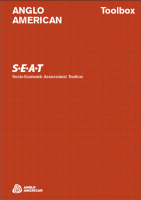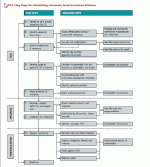 I’m a bit of a DIY throwback, more inclined to bodge my own solution than use hardware provided by well known home improvement stores.
I’m a bit of a DIY throwback, more inclined to bodge my own solution than use hardware provided by well known home improvement stores.
Most things which go up are usually held together by a bit of cardboard wedged in just there and I seem to have developed the use of badly fitting screws into something of an artform.
Then there’s the issue of tools. There’s many I don’t have so I regularly rely upon a strange concoction of screwdrivers and chisels to get most jobs done. Occasionally I use a sledgehammer, when the frustration gets too much.
It’s taken DIY many years to reach the stage where every shed contains a toolbox of the properly calibrated tools and each home a person with the knowledge to use them properly.
Business is embarking upon a similar cycle for the development of sustainability practices. At the moment it’s in bodge mode, with everyone patching things independently of each other, hoping that that’s what’s needed.
A Socio-Economic Assessment Toolbox
However some businesses are taking the lead and publishing the methodologies which underpin their practices, making the tools they use available to all.
Recently Caisse d’Epargne released their financial products certification methodology, as described in Squirrels of Sustainability. Similarly, Anglo American have released their Socio-Economic Assessment Toolbox (SEAT) into the public domain for any company to use.
Its primary purpose is help individual Anglo-American operations to measure and improve the impact they have upon the communities within which they operate.
To achieve this, eight steps are identified for an organisation to go through:
- Profile the current operation
- Profile the community and identify key issues through dialogue with key stakeholders
- Identify and assess current impacts, management measures and social initiatives
- Share results of the assessment with stakeholders and get recommendations for management action
- Develop Key Performance Indicators and associated management and monitoring plans
- Improve contribution of non-core activities to local community
- Post operation closure planning
- Prepare report and feedback to the community
The toolbox itself consists of 23 tools which can be deployed to fulfil these steps.
Many of them are fully comprehensive, such as the one to follow when establishing social investment programmes (pictured). This tool alone consists of over 30 steps spanning the three phases of planning, implementation and monitoring.
Sharing is Better
The most praiseworthy part of the whole venture is that Anglo American has chosen to publish their toolbox without restraint for downstream use.
This flies in the face of accepted business practice where companies either don’t share their solutions, or they seek to licence them and so generate further revenue streams.
Conversely, the need to establish sustainable business practices in a critically short period of time demands that companies collaborate freely and openly with one another.
The publication of toolboxes such as this is one way of achieving this. There is nothing particularly complicated about the tools and much of what they describe is pretty straightforward.
However, other companies also need to change their approach so that they understand the inherent value toolboxes such as this have within them. The basic planning and identification of considerations and outcomes is common to most industries and sectors.
In this way companies across business sectors can start to work together to build sustainable business practices, refining processes and methodologies and creating genuinely broad based foundations for the future.
Thankfully, DIY is not my profession otherwise my bodging ways would quickly lead to future customers hearing how inept I am and seeking other people to put up their shelves.
Similarly, businesses who don’t engage with one another in a true spirit of co-operation may find their reputation failing, and with it their ability to continue in business.
Lucy is Editor at Corporate Eye
